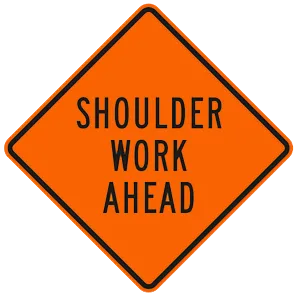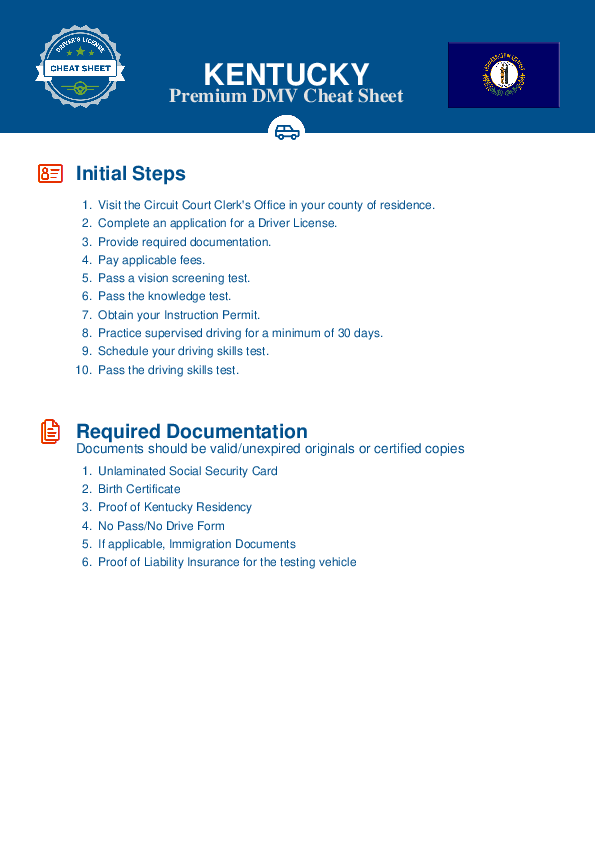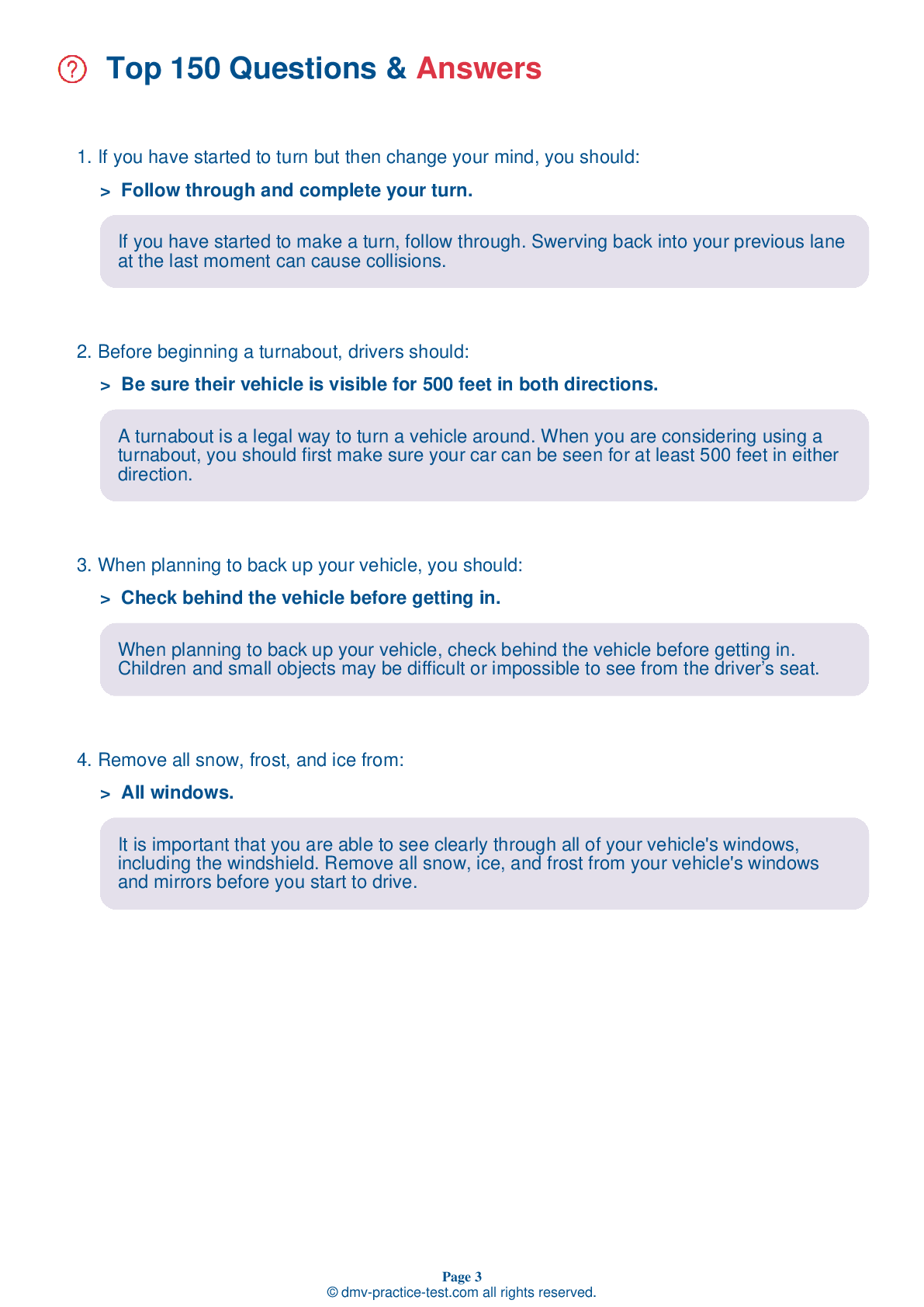FREE Kentucky DMV Practice Test #16 Page 4 of 5
The DMV practise tests in Kentucky have been updated for January 2025. It comprises questions based on the most important traffic signals and laws for 2025 from the KentuckyDriver Handbook. To study for the DMV driving permit test and driver's licence exam, use actual questions that are very similar (often identical!) to the DMV driving permit test and driver's licence exam.
Each question on the practise exam has a tip and explanation to help you recall the ideas. Questions about traffic rules, traffic signs, and driving statutes, as well as knowledge from the Driver Handbook, will be included in the written portion of the official Kentucky DMV test.
You must properly answer 32 of the 40 questions to receive a passing mark. To help you prepare for your Kentucky instruction permit or driver's licence, take our DMV practise test.
The DMV exam is offered in a variety of languages.
Using any form of testing help will result in an automatic fail, and the DMV may take further action against your driver's licence, so avoid it.
25 . You want to park uphill on a two-way road and there is no curb. Which direction do you turn your front wheels?
When parking either uphill or downhill on a road that has no curb, you should turn your wheels so that the vehicle will roll away from the center of the road if the brakes fail.
26 . When driving on the highway, consistently looking far ahead of your vehicle:
To avoid the need for last-minute braking or turning, consistently watch the road far ahead of your vehicle. By looking ahead and being ready to stop or change lanes if needed, you can drive more safely, save fuel, and help keep traffic moving at a steady pace.
27 . When stopped at a red traffic light with a green arrow, you may proceed in the direction of the arrow if you:
You may proceed in the direction that a green arrow signal is pointing if you are in the proper lane, regardless of any other signals that are displayed. Before turning, you must yield the right-of-way to pedestrians and vehicles already within the intersection.
28 . If you encounter an aggressive driver, you should:
Drivers must respect and cooperate with all other road users and conform to specific rules in order to maintain order and to avoid crashes. When encountering an aggressive driver, it is safest to just get out of their way. Always avoid competing with other drivers.
29 . When double solid yellow lines separate lanes of traffic:
Yellow lines separating lanes of traffic indicate that traffic is moving in opposite directions. Double solid lines indicate that passing is not permitted from either direction.
30 . An orange-colored sign like this means:




